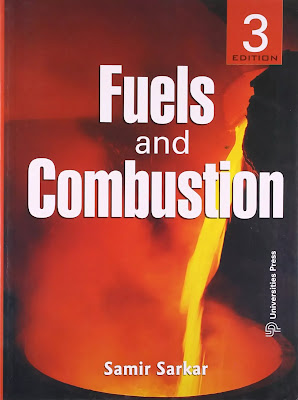Search This Blog
Handwrittennotes, Nanotechnology, NTnotes
LiteBuk
November 30, 2020
Handwrittennotes, IMP GTU, MODELQ&A, Nanotechnology, NTnotes, UNIVERSITYEXAM
LiteBuk
November 30, 2020
Nano Technology (Dept Elec-II) (2170508)
Handwrittennotes, IMP GTU, MODELQ&A, PDPENOTES, UNIVERSITYEXAM
LiteBuk
November 30, 2020
Plant Design & Project Engineering (2170503)
CRENOTES, Handwrittennotes, IMP GTU, MODELQ&A, UNIVERSITYEXAM
LiteBuk
November 30, 2020
Chemical Reaction Engineering - II (2170501)
CRE Model question and Answers
CRENOTES, Handwrittennotes
LiteBuk
November 30, 2020
Chemical Reaction Engineering - II (2170501)
RTD
CRENOTES, Handwrittennotes
LiteBuk
November 30, 2020
Chemical Reaction Engineering - II (2170501)
Catalysis & Solid-Catalysed reactions: Kinetics
- Catalysts‚
- Physical properties of catalyst,
- surface area,
- void volume,
- solid density,
- pore volume distribution,
- Classification and preparation of catalyst,
- catalyst promoters.
- Catalyst inhibitors,
- Catalyst poisons,
- Nature and Mechanism of Catalytic reactions.
- Adsorption isotherms and rates of adsorption and desorption.
- Kinetic regimes,
- rate equations for surface kinetics,
- Pore diffusion,
- determining rate controlling step,
- experimental methods for finding rates,
- product distribution in multiple reactions
CRENOTES, Handwrittennotes
LiteBuk
November 30, 2020
Chemical Reaction Engineering - II (2170501)
Fluid-Particle systems:
- Fluid partial reaction kinetics,
- selection of a model,
- Shrinking Core Model for unchanging and changing size spherical partials,
- Diffusion through gas film and through ash layer controlling, Chemical reaction controlling,
- Shrinking core model,
- its limitations, Determination of rate controlling step.
CRENOTES, Handwrittennotes
LiteBuk
November 30, 2020
Chemical Reaction Engineering - II (2170501)
Fluid-Fluid systems:
- Rate equation,
- rate equation for straight mass transfer,
- kinetic regimes of mass transfer and chemical reaction,
- rate equation for mass transfer and chemical reactions,
- film conversion parameter,
- fluid-fluid reactor design.
CRENOTES, Handwrittennotes
LiteBuk
November 30, 2020
Chemical Reaction Engineering - II (2170501)
Heterogeneous Reactions: Introduction:
- Rate steps involved in heterogeneous systems,
- Overall rate expression for linear and non linear process,
- contacting patterns for two-phase systems
CRENOTES, Handwrittennotes
LiteBuk
November 30, 2020
Chemical Reaction Engineering - II (2170501)
- Basics of non-ideal flow,
- Residence time distribution,
- stimulus response techniques,
- The E,F and C Curves,
- their interrelationship,
- conversion in non-ideal flow reactors,
- Dispersion model,
- Chemical Reaction and dispersion,
- Intensity of fluid mixing.
- Tanks in series model,
- Deviation from plug flow,
- Models for real stirred tanks
CAPS, CAPSNOTES, MODELQ&A, UNIVERSITYEXAM
LiteBuk
November 29, 2020
Computer Aided Process Synthesis (2170507)
CAPSNOTES, Handwrittennotes
LiteBuk
November 29, 2020
Computer Aided Process Synthesis (2170507)
Ch-6: Design and Scheduling of Batch Processes:
- Objectives,
- Introduction,
- Design of Batch Process Units,
- Design of Reactor-Separator Processes,
- Design of Single Product Processing Sequences,
- Design of Multi-Product Processing Sequencing
 |
| Click Here To Download |
"thanks for downloading share to your friends"
CAPSNOTES, Handwrittennotes
LiteBuk
November 29, 2020
Computer Aided Process Synthesis (2170507)
Ch-5 :Energy Integrated Distillation Processes:
- Heat Integrated Distillation Trains,
- Impact of Pressure,
- Multi Effect Distillation,
- Heat Pumping,
- Vapour Recompression and Reboiler Flashing,
- Positioning of Heat Engines and Heat Pumps
"thanks for downloading share to your friends"
CAPSNOTES, Handwrittennotes
LiteBuk
November 29, 2020
Computer Aided Process Synthesis (2170507)
Ch-4 : Synthesis of Heat Exchanger Networks:
- Objectives,
- Basic Heat Exchanger Network Synthesis (HENS),
- Minimum Utility Targets,
- Temperature Interval Method,
- Hohmann / Lochart Composite Curves (HCC),
- Grand Composite Curves (GCC),
- Pinch Design Approach to Inventing a Network,
- Networks for Maximum Energy Recovery,
- Minimum Number of Exchangers, Stream Splitting,
- Threshold and Optimum Approach Temperature,
- Derivation of Network Superstructures for Minimization of Annual Costs,
- Multiple Utility Design Problems
 |
| Click Here to Download |
"thanks for downloading share to your friends"
CAPSNOTES, Handwrittennotes
LiteBuk
November 29, 2020
Computer Aided Process Synthesis (2170507)
Ch 3:Synthesis of Separation Trains
- Objectives,
- Introduction ,
- Phase Separation of Reactor Effluent,
- Criteria for Selection of Separation Methods,
- Selection of Equipment,
- Sequencing of Ordinary Distillation for the Separation of Nearly Ideal Fluid Mixtures,
- Heuristics for Determining Favourable Sequences,
- Marginal Vapour Rate Method,
- Complex and thermally coupled distillation,Sequencing of Ordinary Distillation for the Separation of Nearly Non-Ideal Fluid Mixtures
"thanks for downloading share to your friends"
CAPSNOTES
LiteBuk
November 29, 2020
Computer Aided Process Synthesis (2170507)
- Objectives,
- Reactor Models,
- Reactor Design for Complex Configurations,
- Reactor Network Design Using the Attainable Region
Click here To Download |
"thanks for downloading share to your friends"
CAPSNOTES, Handwrittennotes
Objectives, Design Opportunities, Steps in Product Process Design, Environmental, Protection, Safety Considerations, Engineering Ethics, Role of Computers.
LiteBuk
November 29, 2020
Computer Aided Process Synthesis (2170507)
Objectives, Design Opportunities, Steps in Product Process Design, Environmental, Protection, Safety Considerations, Engineering Ethics, Role of Computers.
"thanks for downloading share to your friends"
Subscribe to:
Comments (Atom)





















